#at aboukir and acre
Explore tagged Tumblr posts
Text
MALMAISON MEDIA SALON SOIRÉE 14: AT ABOUKIR AND ACRE (1898)
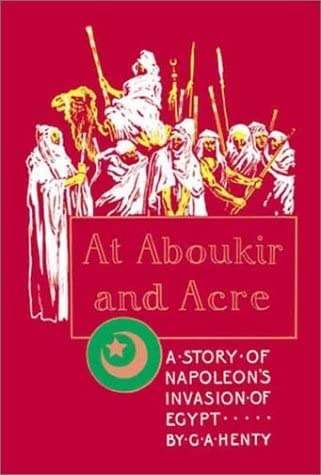
1. The Introduction
Hello, Dear Neighbors, and welcome back to Malmaison Media Salon. So, as I’ve said before, today we’re going to talk about a book by G. A. Henty, one of my archenemies!
Why archenemy?
That’s just how I label authors whose shit I reviewed before. Henty’s “wonderful” book about Frev left a bad taste in my mouth for a long time, so I was understandably mistrustful of any other piece of his.
However, after finding out he has one more Frev book AND several Napoleonic ones and this one (About the Egyptian Campaign, between the two eras), I had to make another review in spite of my lower than six feet expectations. So I went on Project Gutenberg to download the ebook for free. That’s where you can get it by the way.
But hey, maybe this book is better than the one I reviewed before. It’s always a possibility, right? The short answer is no. The long answer is not at all.
For an even longer answer, let us finally proceed with the review, which I dedicate to @koda-friedrich , @blackwidowmarshal123 and @aminoscribbles .
2. The Summary
As you might guess from the title, the book is set during the Egyptian campaign and, in classic Henty fashion, has a young English boy as the protagonist.
Edgar Blagrove, the boy in question, is a son of an English merchant who is left behind in Egypt during the war, so the book follows his adventures as he’s trying to survive, reunite with his family and have adventures along the way (as you do).
Even though Henty’s books are targeted at young boys, the premise sounds like something that I would actually enjoy, but I didn’t.
Let’s dissect this book to find out just how bad it gets, shall we?
3. The Story
The beginning isn’t so great. At first the opening scene promises some action, yet the immersion is broken like glass a couple of pages in with heaps upon heaps of Edgar’s backstory. Nice job, Henty…
Luckily, it’s the only time an extensive flashback like this is used, but the pacing can get about as fast as snail because often pieces of information get repeated in dialogues when nothing bad would’ve happened if the author avoided said repetition.
Moreover, while in the first half or so of the story the hero’s ways of getting out of problems stay realistic and justifiable, the second half has Edgar cross so far into Mary Sue territory that he may as well be called Gary Stu.
(Spoilers ahead)
This kid gets hired by SIDNEY FUCKING SMITH as a midshipman and interpreter. I’m not kidding, that’s an actual plot point!
Let me repeat: A kid who DID NOT previously serve in the navy is made midshipman and interpreter by SIDNEY SMITH, who meets said kid by pure coincidence! And only the interpreter part is justified, since Edgar was educated in several languages from a young age and learned the mother tongues of servants and citizens of Cairo too.
That, in all honesty, was the point where I just lost what little investment I had because it just became too apparent that everything will be fine and Edgar will have a happy ending.
4. The Characters
Before crossing the Gary Stu threshold, Edgar actually had potential to be a good character.
He is a reckless kid who was so bored with his monotonous life in Cairo that he wanted to see the English kick the French in the ass.
He cares about his friends, is kind and ready to help his loved ones and sometimes makes risky decisions.
But then he just becomes somebody who is always right and he gets too perfect. So all the potential goes down the drain like a dead goldfish. Hooray…
Sidi, an Arab boy Edgar rescues in the beginning of the story, is a bit more interesting, mainly due to his dynamic with Edgar as basically adopted brothers. He and his family provide Edgar with shelter in their oasis and help him out in a time of need too. Unfortunately, Sidi is a bit of a flat character for someone who gets a pretty major role in the story, but Henty isn’t too good with characters anyway.
Other characters are flat too. To various degrees. Unfortunately, that’s all I can say because there’s a ton of characters.
However, English officers like Nelson and Sidney Smith are whitewashed and glorified to no end. Henty loves sucking the dick of English nationalism, but I already saw that in my other review so no surprise there.
As for the French side of things… I was genuinely surprised that Napoleon was NOT portrayed as Devil Incarnate and it’s mentioned that he does care about his troops.
Many historical figures are name dropped but don’t appear in person, such as Kleber, Desaix, Junot, Menou, etc. Personally, I’m glad they don’t get a cameo in person for several reasons:
A) the book isn’t about them
B) it would be too unrealistic for Edgar to meet those people
C) after the atrocious portrayal of Montagnards, I DO NOT trust Henty with accuracy when it comes to French Republican generals
Eugene de Beauharnais is omitted once again, even though I’m pretty sure he participated in that campaign. Oh well, shout-out to Eugene from me!
5. The Setting
Henty is, once again, bad with settings and his descriptions are, at times, too minimalistic.
I didn’t feel the action in battle scenes, I couldn’t envision the oasis, the streets of Cairo or any other settings. There’s just not enough to achieve immersion.
6. The Writing
The writing is old fashioned, as it was a book written in the 19th century, but for people who are fluent in English there shouldn’t be a lot of issues with comprehending the vocabulary, except maybe all the naval terms that have no definitions given. Grrr…
I can’t necessarily call Henty’s writing awful, but it’s not for me so it didn’t help my overall impression of the book.
7. The Conclusion
Even though it’s not as bad as “In the Reign of Terror” was, it’s still not a book I would recommend and the improvements are insignificant.
Most characters are still flat, the annoying nationalism has still reared its head, the pacing is longer than the Amazon River and the protagonist becomes a Gary Stu in the end.
The verdict? Please find something else to read.
Anyway, the soirée is officially coming to an end. Please stay tuned because more updates are coming soon.
Love,
Citizen Green Pixel
#malmaison media salon#history#historical art#french history#napoleonic literature#napoleonic media#napoleonic art#g a henty#at aboukir and acre#book review#napoleon bonaparte#louis charles antoine desaix#jean baptiste kleber#general menou#eugène de beauharnais#sidney smith#horatio nelson#jean andoche junot
40 notes
·
View notes
Photo
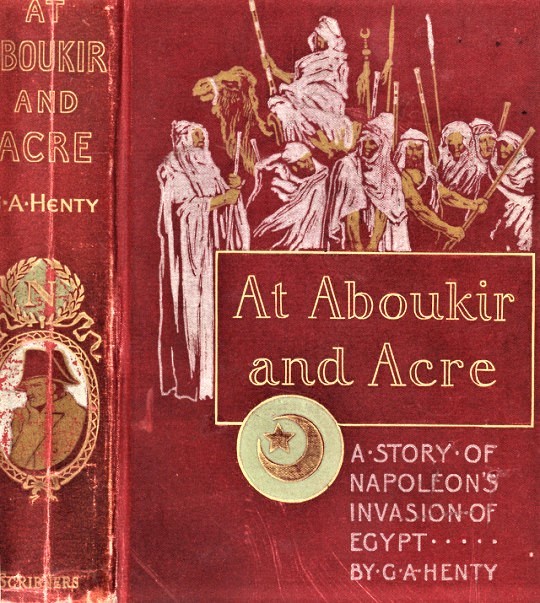
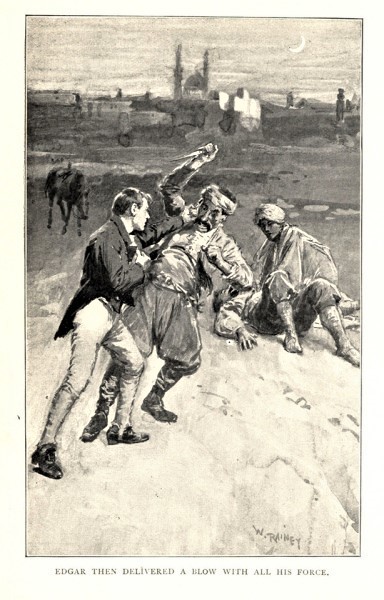
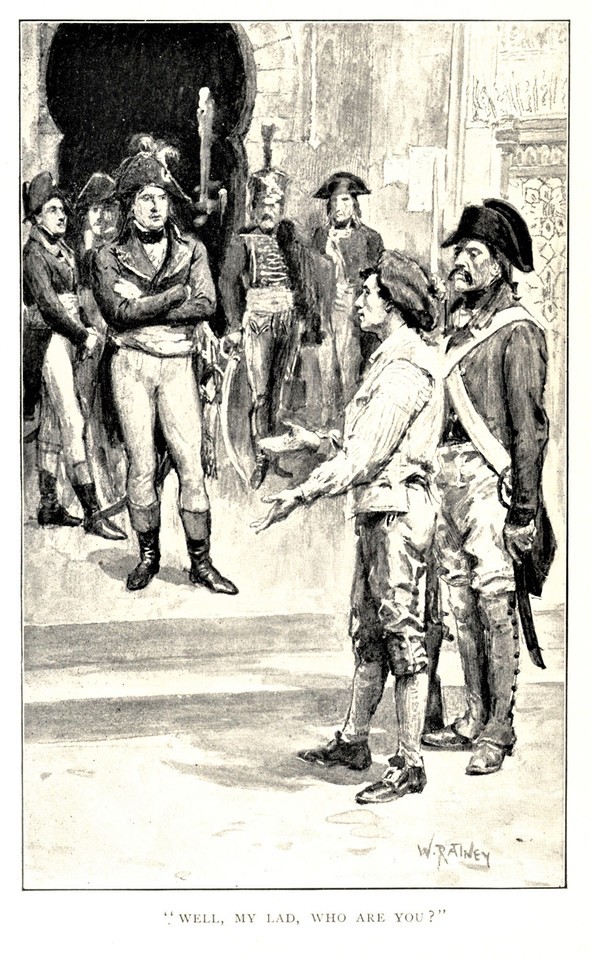
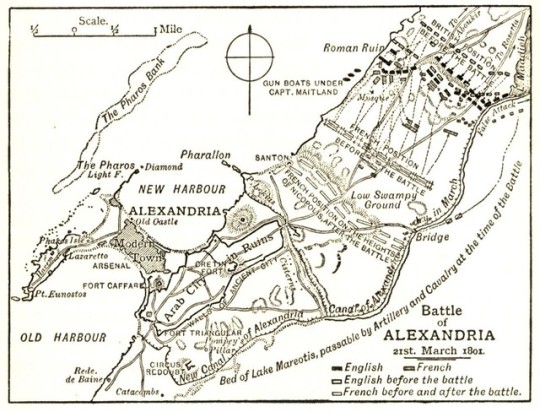
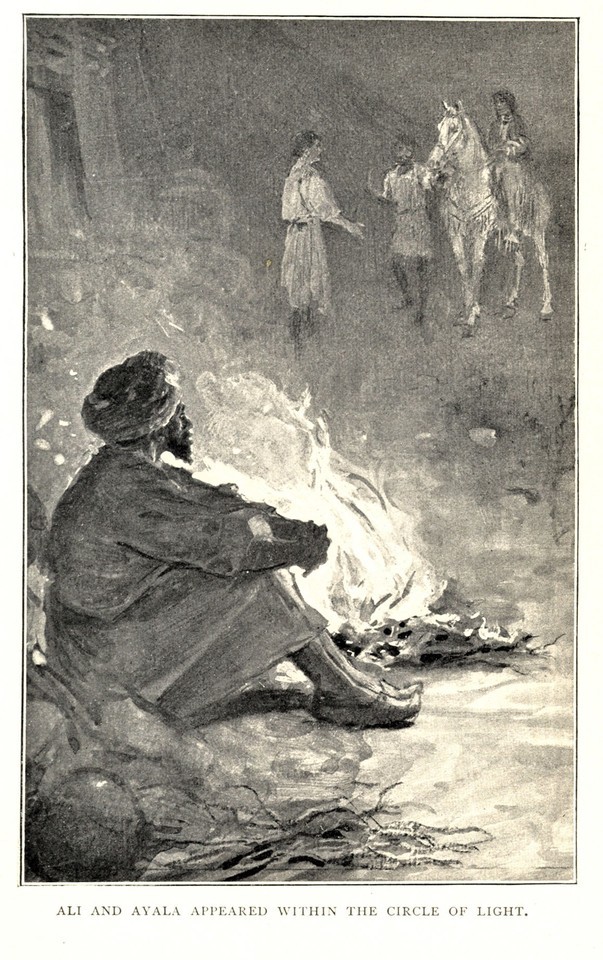
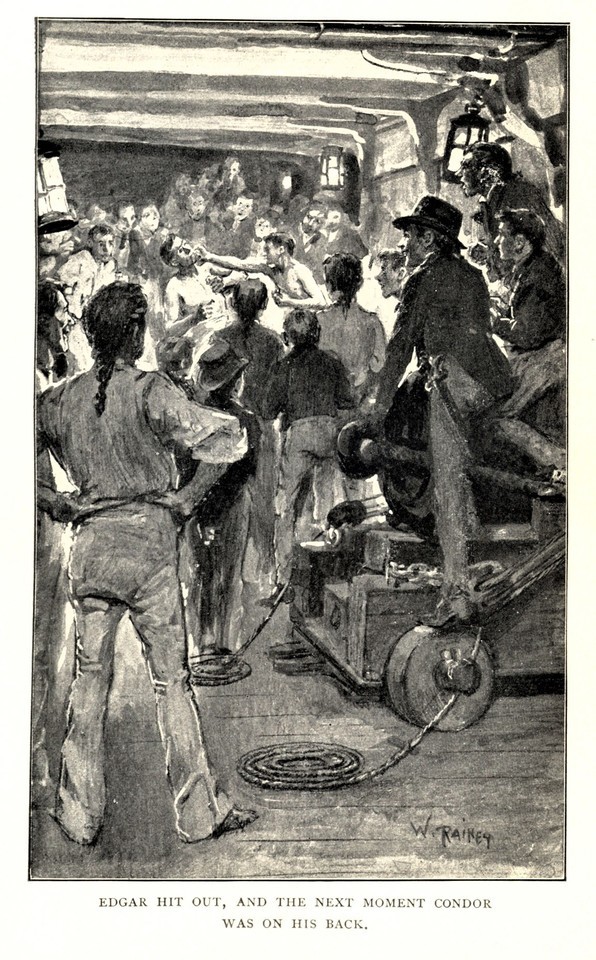
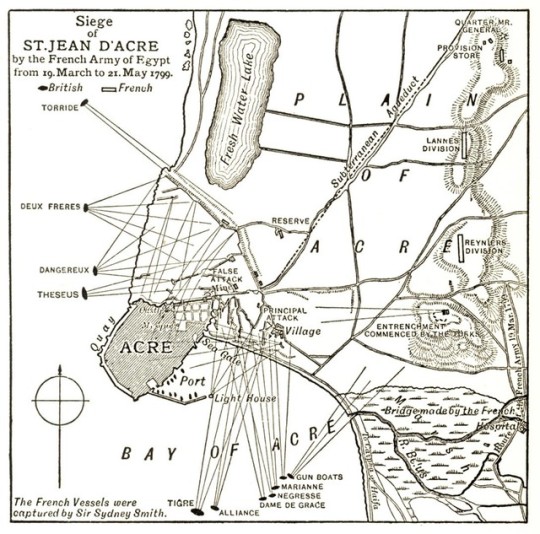
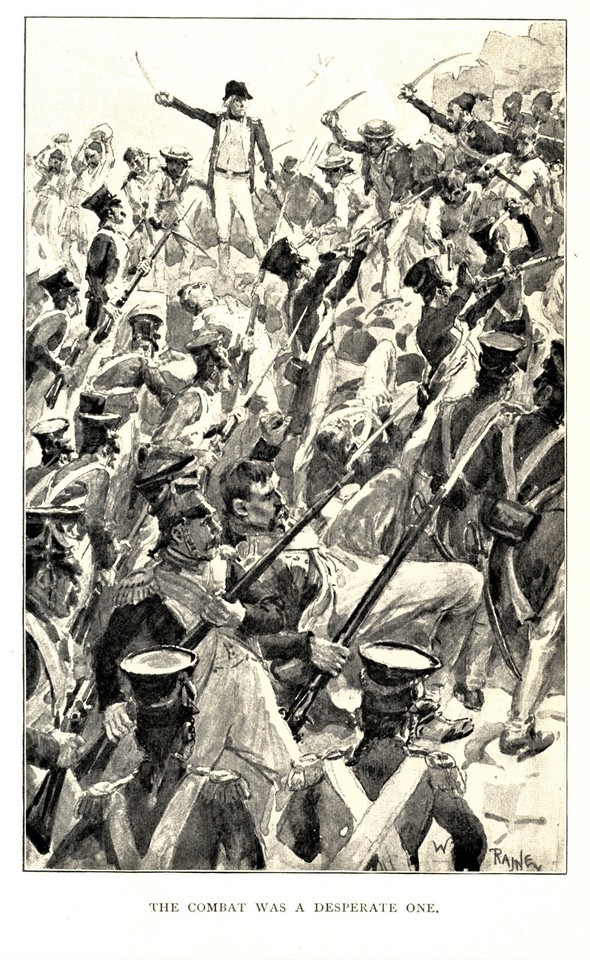
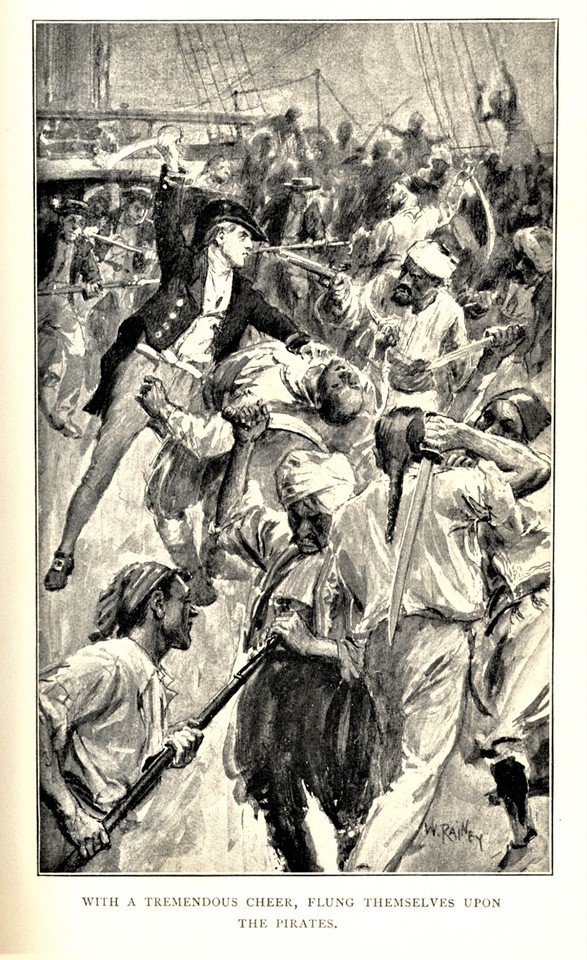
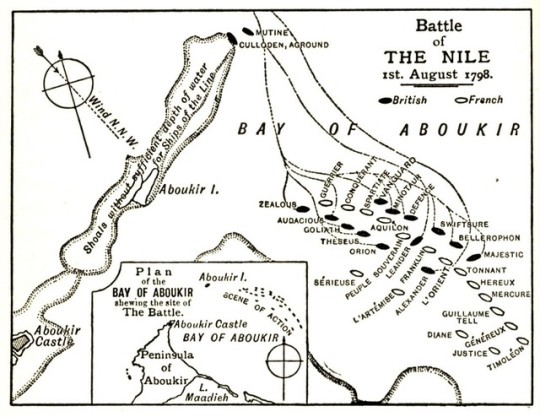
A Henty A Week
This week, our featured G.A. Henty publication is At Aboukir and Acre: A Story of Napoleon's Invasion of Egypt. This edition, published by Charles Scribner's Sons in 1898 includes 8 illustrations by William Rainey as well as 3 cartographic plans. The book has a handsome cover bound in a maroon decorated cloth with gilt titling on both the cover and spine.
George Alfred Henty, ever the supporter of British imperialism, prefaces the tale with an air of superiority and incredulity at Napoleon’s attempted campaign in Egypt and Syria:
“With the general knowledge of geography now possessed we may well wonder at the wild notion entertained both by Bonaparte and the French authorities that it would be possible, after conquering Egypt, to march an army through Syria, Persia, and the wild countries of the northern borders of India, and to drive the British altogether from that country.”
If you’re not familiar with the history, students at Boston University have put together a great guide to resources here.
Stay tuned each Saturday to learn more about the publication history of G.A. Henty’s novels and catch up on what you missed by reading some of our previous posts here!
– Katie, Special Collections Graduate Intern
#George Alfred Henty#G.A. Henty#Historical Curriculum Collection#historical fiction#illustrated books#young adult fiction#Charles Scribner’s Sons#colonialist fiction#colonialist history#A Henty a Week#Katie
23 notes
·
View notes
Text
Four Gun Field: Naming-a wasted chance!
The site owned by Matthew Homes in Otterham Quay Lane, Upchurch, next to the Three Sisters public house is marketed under the well known local name of Four Gun Field.
Four names have been chosen for the development. Based on the names of brickfield owners they are: Eastwood Meadow, Woods Edge, Butcher’s Green and Quilters Yard.
Historic details on the names:
Edward Frederick Quilter.
A businessman who also bred horses from Hill House, Belstead in Suffolk. Later the property, a 106 acre farm was called Belstead House. Used in modern times as a Judges Lodgings and an office for Suffolk County Council. One of 5 children, he died July 20th 1905 aged 57. He never married. Buried in St Mary’s Churchyard, Belstead.
Joseph Edward Butcher.
Businessman from Frindsbury, Rochester. He owned several brick field sites in Kent including Four Gun Field. His bricks carried 4 large capital B’s. He used nearby Otterham Creek to transport his bricks directly to London in his own barges. These were Hartley ( 1860 ), Mid Kent ( 1863 ), Othello 1864, Princess ( 1866 ) and Trotter ( 1875 ). The largest sailing barge, Trotter could carry 45 tons of bricks.
John Woods.
From Singlewell, near Gravesend. Owned brickfields in Lower Halstow and a bargeyard in the village, building many fine sailing barges. Some of these were, Director, Sophia, Fanny, Arthur James, Nile, George and Ellen 1845, ABCD, Adelaide, Arthur and Eliza and Aboukir.
John Francis Eastwood.
He started the Eastwood Company in the early 1800’s. He had military connections and was once a serving commissioned officer, probably with the Duke of Wellington. Certainly John Eastwood owned Wellington Wharf, in Lambeth, which is named after the Duke of Wellington. A clever businessman, his company soon became the main force in brick building. It was suggested in 1880 that Eastwood would merge with five other brick field owners, Edward Frederick Quilter of Belstead - Suffolk, Joseph Edward Butcher of Frindsbury - Rochester, Josiah Jackson of Shoebury - Essex, John Woods of Singlewell - Gravesend and Charles Richardson of Vauxhall, London. Together the new company would be called Eastwood’s Limited.
It would appear that the suggested names came Matthew Homes Limited, owners of the site, who put forward the brickfield owner names and a list of sailing barge names. Upchurch Parish Council agreed the brickfield owner names. The names were sent to Swale Borough Council, Naming Department now run by Mid-Kent, Maidstone.
At no time did anyone check that the names for the new housing estate met the required basic criteria adopted by Upchurch Parish Council and Swale Borough Council.
Woods is local to Lower Halstow. Quilter is local to Suffolk. It is true that all names plus Josiah Jackson of Shoebury and Charles Richardson of Vauxhall were the five brickfield owners in 1880 who merged into one company.
Shouldn’t someone have checked the suggested names had a historic connection to Otterham Quay Lane, Upchurch? Isn’t it, a basic condition when suggesting names, to make sure your information is correct. Only two of the names conform to the requirements, Eastwood and Butcher.
Helpfully the GIS Operative & Street Naming and Numbering Officer for the Council Naming Department says, the names can not now be changed or renamed. “ The decision will not be overturned.” New residents of Four Gun Field are bound to ask about their names! Local relations of brickfield workers, will also ask the question, WHY?
I was asked to help with the naming and given the four names. After very basic research, I found the names didn’t all conform to the council requirements. This was mentioned to the parish clerk but I was told, four hours after been given the four names, it had been passed onward to Swale Borough Council.
It would seem both Matthew Homes Ltd., and Upchurch Parish Council were suddenly in a rush to complete the process. When asked later, UPC said a ‘historian’ had checked the information, which on further checking was found to be, an employee of Matthew Homes in Potters Bar.
What a shame the area’s great heritage has not been remembered correctly.
Pictures showing Four Gun Field while working as a brick field can be seen via this web site: www.upchurch-village.co.uk
#Matthew Homes#Upchurch Parish Council#Swale Borough Council#Mid Kent#brick makers#Upchurch#Otterham Quay Lane#Three Sisters PH#Naming
0 notes
Text
Salisbury. Early view of stone gates and Gate Houe for Paralowie House which was built in 1894. Paralowie gate house how I remember it.
Posted from 5 axis machining China blog
Salisbury. Early view of stone gates and Gate Houe for Paralowie House which was built in 1894. Paralowie gate house how I remember it.
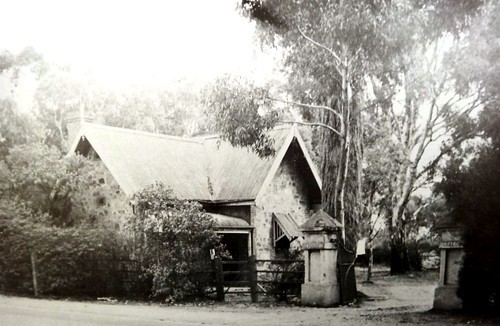
Check out these china milling parts suppliers images:
Salisbury. Early view of stone gates and Gate Houe for Paralowie House which was built in 1894. Paralowie gate house how I remember it.

Image by denisbin Oranges along the Para. The orange tree is botanically known as citrus sinensis which comes from China but is grown in tropical and subtropical areas of the world. The fruit of this tree gave us the name for one of our primary colours. This colour was first recoded in the English language in 1512. Orange is a Sanskrit Indian word. In Europe oranges have been grown in Italy and Spain since they were brought there by the Crusaders in 1100s from the Middle East. The first mention of commercial orange growing along the Para was in 1870 when Mr Urlwin exhibited Salisbury oranges at the Adelaide Royal Show. Then Mr F Fendon was described in newspapers in 1876 as a pioneer of commercial orange growing at Salisbury as he had been experimenting with orange trees since 1850. He hoped his display at the Salisbury Show of 1876 would encourage others to turn to orange growing. He had 20 varieties growing along Para when he exhibited them at the Salisbury Annual Show in 1876. More oranges were grown in the 1880s and by the 1890s hundreds of cases a year were being exported by P & O steamers to London. Thus the big expansion of commercial orange growing was in the 1880s. The oranges grown were Navel, Valencias, Washingtons and Lisbons( lemon) and these were the four” houses” in the Salisbury Primary School in the 1950s. Other earlier varieties grown included Sabina (a sour Italian orange), Rio (a red grapefruit), Seville oranges etc. Navel orange is a variety that was developed in Brazil in the 1820s, Washingtons were also from Brazil but Navels were developed for commercial orchards in California. Mr Russsell of Paralowie House is a good example of what Salisbury farmers did. He converted from growing oats and wheat to oranges in 1890. He planted 82 acres of his 122 acres in citrus trees 21 feet apart giving him over 1,000 trees. The annual floods of the Little Para were the secret of providing the rich alluvial soils in the Para valley. Other early citrus growers in Salisbury were the Kuhlmann, Moss, Tate, Jenkins, Harvey, Ponton and Sayer families. In the 1970s as the citrus industry died the flood plains of the Little Para were converted to parklands if they flooded or to housing if they were not flood prone. But once the Little Para Reservoir was completed the annual floods stopped anyway. Oranges were also extensively grown at Golden Grove. During the dry of summer water was taken from the Little Para to irrigate the oranges and one old stone waterwheel used for this purpose has been restored in Salisbury. That waterwheel was built for orange grower Frederick Kuhlmann of the Old Spot Hotel in 1899 and used until the 1940s.
Salisbury. Sir Montague( or Montagu) Chapman, Third Baronet of Westmeath near Dublin Ireland, used a loop hole in the Special Survey regulations of 1839 and selected his 4,000 acres for £4,000 in different areas. He took 800 acres at Koonunga near Kapunda; 500 acres at Kapunda (a friend of his Bagot also got land there); 500 acres near Waterloo and Marrabel; and later in 1842 he selected a further 2,200 acres between the Little Para River and Dry Creek at what is now Mawson Lakes, Salisbury and Cross Keys. At Killua Castle in Ireland he had 9,000 acres and hundreds of tenant farmers. He wanted to do the same in SA. In 1840 he sent out Captain Charles Bagot from Ireland with 224 Irish immigrants to settle his, and Bagot’s lands, at Kapunda with Irish labourers and tenants. Then in 1842 he sailed out to SA himself with 120 Irish tenant farmers whom he installed on his lands at Cross Keys. Sir Montague Chapman returned to Ireland the next year. Then in 1847 he sent out a further 214 Irish immigrants to be tenant farmers on his Cross Key to Salisbury lands. They came out on the ships named Trafalgar and Aboukir. Sir Montague Chapman lived in Ireland not SA but returned to his SA estates in 1852 and drowned at sea in 1853 off Portland when returning to SA from Melbourne. His brother inherited the SA lands and estates. The lasting effect of Sir Montague Chapmans tenant farming ideas was a large number of Irish Catholics around the Salisbury and Kapunda districts. Many of these immigrants soon became independent landowners themselves rather than Montague’s tenants.
Daniel Brady, another Irishman was a self-made Irish immigrant to the area. He purchased 100 acres, now the Parafield Airport in 1845. He then got the license to the Cross Keys hotel. Much later Brady laid out the town of Virginia in 1858.But there were other Catholic influences in Salisbury too. William Leigh of Staffordshire (and of Leigh Street Adelaide) was a great land investor and speculator in SA and donated lands early to the Anglican Church ( in Leigh St.) then he converted to Catholicism and donated lands to the SA Catholic Church for the first church and bishop’s palace on West Terrace etc. At Salisbury he donated 500 acres to the local Catholic Church along the Little Para where the reservoir is now situated. The local church rented that farm out as income until it was sold in 1896. Thus because of two major Catholic British aristocrats Salisbury thrived as a centre of Catholicism and had one of the largest Catholic Churches in SA in the mid-19th century. The church itself was set up when the state Government was offering glebe lands for churches to get established. The Catholics of Salisbury received 20 acres of land under this system through Bishop Murphy in 1850. The foundations of St Augustine’s Church were laid in 1851 with the church being used before its final official opening in 1857. This grand stone church replaced an earlier pug and pine church which had opened in 1847 on the site. The tower was added in 1926.
But the main story of Salisbury is centred on Scottish born John Harvey of Wick. But who was John Harvey? Is his main claim to fame that he brought out from South Africa soursob bulbs? He was a man of ideas wanting to make money. He came out to SA alone when he was 16 years old arriving in 1839 on the ship named Superb. By 1843 Harvey had moved to Gawler where he drove mails between Adelaide and Gawler. This gave him the idea of grazing cattle on the unoccupied plains between the two settlements. He started squatting. He let overlanders from NSW depasture their flocks on these lands, for a fee, although he had no legal right to do so. He accepted cattle for fees and soon had stock of his own. To this he added some horses which he bred for sale (or export to India) and once he had fattened the cattle he sold them for meat for the Adelaide market or through his butcher shop in growing Gawler. He became a major meat supplier for Adelaide and Gawler. He also experimented with cereal growing on the Salisbury plains and claims to be have been the first to do so. Within a few years he had amassed a sizeable amount of money from almost nothing and he purchased his first land at Gawler, where he built his first stone house, and at Salisbury when the Hundred of Yatala was declared in 1846. He was temporarily forced off the land he was squatting upon until he purchased 147 acres in 1847. He subdivided a small part of it to create the town of Salisbury with the main street named after himself and the street parallel to it named Wiltshire where his wife Ann Pitman (cousin of Sir Isaac Pitman of shorthand fame) was born. His town plans were submitted in 1848 as he hoped to make money from this action. Harvey continued living in Salisbury and went into building houses for people, breeding race horses and encouraging agriculture. He was elected to parliament in 1857 for one term and served on the Yatala District Council. His land deals included selling the area of Gawler that became Bassett Town by the old Gawler railway station. He was a mainstay of the Royal Horticultural Society and the Adelaide Racing Club. He was a local Justice of the Peace. John Harvey died in Salisbury in 1899, aged 78 years but his descendants stayed on in the town to be orange growers. John and his wife Ann are buried in St John’s Anglican cemetery. He left three sons and daughter.
By 1854 there were churches being erected in Salisbury; a flour mill; a hotel; and many houses for residents. The earliest SA settlers has eschewed the Adelaide Plains as they were hot and dry and they preferred the wetter, cooler Adelaide Hills. By 1845 less hills land was available and some saw the potential of this fertile little river valley close to the Adelaide and on the main copper mine routes from Adelaide to Kapunda and Burra. Apart from the Catholics the town attracted Anglicans, who were to construct their first church in 1849 or 1850 although the date on the building says 1846 which was before the land was even surveyed. John Harvey is known to have sold two lots to the Anglican Bishop Short for a nominal amount for an Anglican Church in 1850. It is therefore unlikely that the Anglicans built anything before 1850 but John Harvey might have allowed a building on his land before it was officially handed over to Bishop Short. A number of Primitive Methodists were also drawn to Salisbury and they who formed their congregation in 1849 with services on the banks of the Little Para. In 1851 they opened their Primitive Methodist Church called Hephzibah which was replaced with a second solid stone church in 1858. The Primitive Methodists purchased their land from John Harvey. They then established satellite Primitive Methodist churches at Burton, Sturton, Greenwith and other further out districts like Carclew, Two Wells etc. The Wesleyan Methodists had a church at the Old Spot (1857) but they too constructed a Wesleyan church in Salisbury West in 1858 after the arrival of the railway to the town. It has been a residence since 1904 but is defaced with ugly 1950s additions.
Salisbury grew quite quickly because it was only a few years before the town was connected with Adelaide by the Gawler train line. North of the Para River John Porter purchased land at the same time as John Harvey in 1847 and he too create a small private town with Porter, Gawler and Commercial streets etc. His town merged with Harvey’s as did the later 1856 subdivision of Salisbury West by William Trevaskis. No cathedral emerged but the town had its churches, hotels, a flour mill and industry. It soon had a private school too. Charles James Blatche Taplin, my great great grandfather had a licensed school in Salisbury from 1855 until his death in 1867. His wife Eliza Taplin had a separate school for girls which she continued after his death. After the Education Act of 1875 the government built the old Salisbury School in 1876. Charles Taplin was also the treasurer of the St Johns Anglican Church for many years and was present at the laying of its foundation stone with architect Daniel Garlick in 1858. The town remained a local service centre until World War Two when the government purchased land at Edinburgh for an ammunitions works and secure storage area and a further 58 acres of land, mainly from descendants of John Harvey, along Park Terrace in Salisbury for emergency war housing. It was required to house all the workers required for the war time industry at Penfield. Some 284 fibro “cabin homes” were erected in Salisbury on vacant land and the population grew rapidly. After the war the town grew further with the establishment of Salisbury North in 1949 as a Housing Trust suburb with over 500 new homes. Shortly after this in 1954 the new satellite city of Elizabeth and its associated industries was created in the Salisbury Council area abutting on to the Para River. In the 1950s most of the pioneering families from the late 1840s were still living in Salisbury as it was just a small rural town with a water trough for horses in the main street and a hitching post! By the 1970s the town had become a city and changed dramatically for ever.
Some Historic Salisbury Properties. •Anglian Church and cemetery. See details above. Early building 1849 or 1846? The Garlick designed church opened 1865 but the foundation stone was laid in 1858. In 1989 a fire destroyed the interior and the roof of the church was rebuilt. •Former Primitive Methodist Hephzibah Church and cemetery. After open air services the first Primitive Methodist church was built on this site in 1851. In 1858 a new grand church called Hephzibah was erected here to replace it. The land for the church was purchased from John Harvey for £10. The church name means “in her delight”. The church was restored in 1904 and then became the only Methodist church in Salisbury. In 1960 the church was sold to Coles who replaced it with a supermarket and a new Methodist Church was built on Park Terrace. That new church is now the Uniting Church. •Salisbury Institute. This important building for social events also providing the original reading room and library which opened in 1884.The land was donated by William Kelly of One Tree Hill and the architect was Frederick Dancker originally from Macclesfield where he designed their institute too. Like many institutes it became a community hall run by the Council in 1939 who started showing movies in it. •Salisbury Schools. The northern wing of Salisbury School was built in 1876 with pointed gothic windows in the west gable. The southern wing was added in 1879. Notice the slightly different windows etc. The first school operated in the 1846/49 Anglican Church for many years. A High School opened in Salisbury in 1959. •Salisbury Police Station and Courthouse now the town museum. This police station with cells and outbuildings and Courthouse was opened in 1859 after a request by MP John Harvey to the Commissioner of Public Works. E.A Hamilton was the architect for the government. The station cost £730. It is now a museum.
Salisbury West, the Gawler railway and Shirley Hall. The first major railway line in South Australia was from Adelaide to Gawler and it reached Salisbury in 1857. A local land owner then subdivided some of his land to create Salisbury West which was west of the new railway line. William Trevaskis did this in 1856 before the railway came when he divided off a few acres from his original 1846 freehold estate of 82 acres (one section). As a land speculator he created 61 town blocks which he advertised as “adjoining Salisbury Station of the Adelaide Gawler Town Railway.” This worked well. This area just west of the railway station soon had residences, a hotel, and a Wesleyan Church. When Trevaskis subdivided this estate he named one street East Terrace facing the railway line. This is where Edmund Paternoster later established his windmill, pumps and engineering works in 1878. His Little Gem windmills were sold in all colonies. East Tce was later changed to Paternoster Street to commemorate this important local industrialist of the 19th century. The Assistant Engineer for the construction of the railway Adelaide-Gawler railway, W Coulls purchased three blocks and built the Australian Heritage Listed Shirley Hall is on one of them with outbuildings, coach house and stables on the others. Shirley Hall was built just behind the old Wesleyan Church of 1858 with cellars and 7 main rooms and a separate kitchen in the outbuildings. The original brick and cast iron fence (made at James Martin foundry Gawler) still survives as does the original slate tiles. Coulls died in 1861 and the house had several owners before it was purchased by James Thompson in 1898. He renamed it Chelsea. Sir Jenkin Coles, Speaker of the South Australian parliament for the lower Mid North was a friend of James Thompson and often held political meetings at Chelsea House. The house was only sold out of the Thompson family in 1975. The nearby Wesleyan Methodist Church was built in Romanesque style in 1858. With the three Methodist churches union in 1900 all services were conducted in the former Wesleyan Church between 1900 and 1904 when repairs to Hephzibah were completed and Hebzibah then became the one and only Methodist church in Salisbury. Not long after 1904 this Wesleyan church was sold as a residence.
Paralowie. Paralowie House overlooks the Little Para River and the owner in 1894 had a fine stone Gate House and stone pillar gates built right on the edge of the river on Waterloo Corner Road. Paralowie House and this gate house was built in 1894 for Frank Russell an investor and farmer. His story is related above how he changed from dairying and cereal growing to orange and lemon orchards in 1890. The land on which Paralowie now stands was earlier owned by the Bagster family who sold it on in 1883. The Russells liked to host functions at their residence and it was reported in the press that the whole town attended celebrations here when Mafeking was successfully relived by the British forces in 1900 during the Boer War. Russells sold their Paralowie estate in 1917. A later resident of Paralowie House for many years was the state Coroner lawyer T.E.Cleland. Cleland lived at Salisbury and travelled to the Coroner’s Court by train daily rom Salisbury. Cleland served as Coroner from 1947 into the 1960s. Cleland was a pig breeder.
Salisbury. Southern wall of the old Wesleyan Methodist Church. Built in the new Salisbury west subdivision of 1858 when the church was built. It closed around 1904 when the Primitive Methodist church became the main Methodist church of the town. .
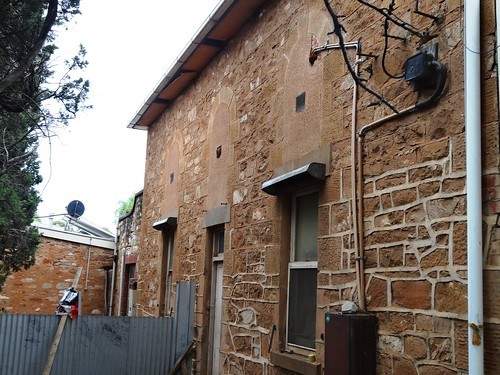
Image by denisbin The first major railway line in South Australia from Adelaide to Gawler reached Salisbury in 1857. A local land owner then subdivided some of his land to create Salisbury West which was west of the new railway line. Trevaskis did this in 1856 before the railway came. he created 61 town blocks.
Oranges along the Para. The orange tree is botanically known as citrus sinensis which comes from China but is grown in tropical and subtropical areas of the world. The fruit of this tree gave us the name for one of our primary colours. This colour was first recoded in the English language in 1512. Orange is a Sanskrit Indian word. In Europe oranges have been grown in Italy and Spain since they were brought there by the Crusaders in 1100s from the Middle East. The first mention of commercial orange growing along the Para was in 1870 when Mr Urlwin exhibited Salisbury oranges at the Adelaide Royal Show. Then Mr F Fendon was described in newspapers in 1876 as a pioneer of commercial orange growing at Salisbury as he had been experimenting with orange trees since 1850. He hoped his display at the Salisbury Show of 1876 would encourage others to turn to orange growing. He had 20 varieties growing along Para when he exhibited them at the Salisbury Annual Show in 1876. More oranges were grown in the 1880s and by the 1890s hundreds of cases a year were being exported by P & O steamers to London. Thus the big expansion of commercial orange growing was in the 1880s. The oranges grown were Navel, Valencias, Washingtons and Lisbons( lemon) and these were the four” houses” in the Salisbury Primary School in the 1950s. Other earlier varieties grown included Sabina (a sour Italian orange), Rio (a red grapefruit), Seville oranges etc. Navel orange is a variety that was developed in Brazil in the 1820s, Washingtons were also from Brazil but Navels were developed for commercial orchards in California. Mr Russsell of Paralowie House is a good example of what Salisbury farmers did. He converted from growing oats and wheat to oranges in 1890. He planted 82 acres of his 122 acres in citrus trees 21 feet apart giving him over 1,000 trees. The annual floods of the Little Para were the secret of providing the rich alluvial soils in the Para valley. Other early citrus growers in Salisbury were the Kuhlmann, Moss, Tate, Jenkins, Harvey, Ponton and Sayer families. In the 1970s as the citrus industry died the flood plains of the Little Para were converted to parklands if they flooded or to housing if they were not flood prone. But once the Little Para Reservoir was completed the annual floods stopped anyway. Oranges were also extensively grown at Golden Grove. During the dry of summer water was taken from the Little Para to irrigate the oranges and one old stone waterwheel used for this purpose has been restored in Salisbury. That waterwheel was built for orange grower Frederick Kuhlmann of the Old Spot Hotel in 1899 and used until the 1940s.
Salisbury. Sir Montague( or Montagu) Chapman, Third Baronet of Westmeath near Dublin Ireland, used a loop hole in the Special Survey regulations of 1839 and selected his 4,000 acres for £4,000 in different areas. He took 800 acres at Koonunga near Kapunda; 500 acres at Kapunda (a friend of his Bagot also got land there); 500 acres near Waterloo and Marrabel; and later in 1842 he selected a further 2,200 acres between the Little Para River and Dry Creek at what is now Mawson Lakes, Salisbury and Cross Keys. At Killua Castle in Ireland he had 9,000 acres and hundreds of tenant farmers. He wanted to do the same in SA. In 1840 he sent out Captain Charles Bagot from Ireland with 224 Irish immigrants to settle his, and Bagot’s lands, at Kapunda with Irish labourers and tenants. Then in 1842 he sailed out to SA himself with 120 Irish tenant farmers whom he installed on his lands at Cross Keys. Sir Montague Chapman returned to Ireland the next year. Then in 1847 he sent out a further 214 Irish immigrants to be tenant farmers on his Cross Key to Salisbury lands. They came out on the ships named Trafalgar and Aboukir. Sir Montague Chapman lived in Ireland not SA but returned to his SA estates in 1852 and drowned at sea in 1853 off Portland when returning to SA from Melbourne. His brother inherited the SA lands and estates. The lasting effect of Sir Montague Chapmans tenant farming ideas was a large number of Irish Catholics around the Salisbury and Kapunda districts. Many of these immigrants soon became independent landowners themselves rather than Montague’s tenants.
Daniel Brady, another Irishman was a self-made Irish immigrant to the area. He purchased 100 acres, now the Parafield Airport in 1845. He then got the license to the Cross Keys hotel. Much later Brady laid out the town of Virginia in 1858.But there were other Catholic influences in Salisbury too. William Leigh of Staffordshire (and of Leigh Street Adelaide) was a great land investor and speculator in SA and donated lands early to the Anglican Church ( in Leigh St.) then he converted to Catholicism and donated lands to the SA Catholic Church for the first church and bishop’s palace on West Terrace etc. At Salisbury he donated 500 acres to the local Catholic Church along the Little Para where the reservoir is now situated. The local church rented that farm out as income until it was sold in 1896. Thus because of two major Catholic British aristocrats Salisbury thrived as a centre of Catholicism and had one of the largest Catholic Churches in SA in the mid-19th century. The church itself was set up when the state Government was offering glebe lands for churches to get established. The Catholics of Salisbury received 20 acres of land under this system through Bishop Murphy in 1850. The foundations of St Augustine’s Church were laid in 1851 with the church being used before its final official opening in 1857. This grand stone church replaced an earlier pug and pine church which had opened in 1847 on the site. The tower was added in 1926.
But the main story of Salisbury is centred on Scottish born John Harvey of Wick. But who was John Harvey? Is his main claim to fame that he brought out from South Africa soursob bulbs? He was a man of ideas wanting to make money. He came out to SA alone when he was 16 years old arriving in 1839 on the ship named Superb. By 1843 Harvey had moved to Gawler where he drove mails between Adelaide and Gawler. This gave him the idea of grazing cattle on the unoccupied plains between the two settlements. He started squatting. He let overlanders from NSW depasture their flocks on these lands, for a fee, although he had no legal right to do so. He accepted cattle for fees and soon had stock of his own. To this he added some horses which he bred for sale (or export to India) and once he had fattened the cattle he sold them for meat for the Adelaide market or through his butcher shop in growing Gawler. He became a major meat supplier for Adelaide and Gawler. He also experimented with cereal growing on the Salisbury plains and claims to be have been the first to do so. Within a few years he had amassed a sizeable amount of money from almost nothing and he purchased his first land at Gawler, where he built his first stone house, and at Salisbury when the Hundred of Yatala was declared in 1846. He was temporarily forced off the land he was squatting upon until he purchased 147 acres in 1847. He subdivided a small part of it to create the town of Salisbury with the main street named after himself and the street parallel to it named Wiltshire where his wife Ann Pitman (cousin of Sir Isaac Pitman of shorthand fame) was born. His town plans were submitted in 1848 as he hoped to make money from this action. Harvey continued living in Salisbury and went into building houses for people, breeding race horses and encouraging agriculture. He was elected to parliament in 1857 for one term and served on the Yatala District Council. His land deals included selling the area of Gawler that became Bassett Town by the old Gawler railway station. He was a mainstay of the Royal Horticultural Society and the Adelaide Racing Club. He was a local Justice of the Peace. John Harvey died in Salisbury in 1899, aged 78 years but his descendants stayed on in the town to be orange growers. John and his wife Ann are buried in St John’s Anglican cemetery. He left three sons and daughter.
By 1854 there were churches being erected in Salisbury; a flour mill; a hotel; and many houses for residents. The earliest SA settlers has eschewed the Adelaide Plains as they were hot and dry and they preferred the wetter, cooler Adelaide Hills. By 1845 less hills land was available and some saw the potential of this fertile little river valley close to the Adelaide and on the main copper mine routes from Adelaide to Kapunda and Burra. Apart from the Catholics the town attracted Anglicans, who were to construct their first church in 1849 or 1850 although the date on the building says 1846 which was before the land was even surveyed. John Harvey is known to have sold two lots to the Anglican Bishop Short for a nominal amount for an Anglican Church in 1850. It is therefore unlikely that the Anglicans built anything before 1850 but John Harvey might have allowed a building on his land before it was officially handed over to Bishop Short. A number of Primitive Methodists were also drawn to Salisbury and they who formed their congregation in 1849 with services on the banks of the Little Para. In 1851 they opened their Primitive Methodist Church called Hephzibah which was replaced with a second solid stone church in 1858. The Primitive Methodists purchased their land from John Harvey. They then established satellite Primitive Methodist churches at Burton, Sturton, Greenwith and other further out districts like Carclew, Two Wells etc. The Wesleyan Methodists had a church at the Old Spot (1857) but they too constructed a Wesleyan church in Salisbury West in 1858 after the arrival of the railway to the town. It has been a residence since 1904 but is defaced with ugly 1950s additions.
Salisbury grew quite quickly because it was only a few years before the town was connected with Adelaide by the Gawler train line. North of the Para River John Porter purchased land at the same time as John Harvey in 1847 and he too create a small private town with Porter, Gawler and Commercial streets etc. His town merged with Harvey’s as did the later 1856 subdivision of Salisbury West by William Trevaskis. No cathedral emerged but the town had its churches, hotels, a flour mill and industry. It soon had a private school too. Charles James Blatche Taplin, my great great grandfather had a licensed school in Salisbury from 1855 until his death in 1867. His wife Eliza Taplin had a separate school for girls which she continued after his death. After the Education Act of 1875 the government built the old Salisbury School in 1876. Charles Taplin was also the treasurer of the St Johns Anglican Church for many years and was present at the laying of its foundation stone with architect Daniel Garlick in 1858. The town remained a local service centre until World War Two when the government purchased land at Edinburgh for an ammunitions works and secure storage area and a further 58 acres of land, mainly from descendants of John Harvey, along Park Terrace in Salisbury for emergency war housing. It was required to house all the workers required for the war time industry at Penfield. Some 284 fibro “cabin homes” were erected in Salisbury on vacant land and the population grew rapidly. After the war the town grew further with the establishment of Salisbury North in 1949 as a Housing Trust suburb with over 500 new homes. Shortly after this in 1954 the new satellite city of Elizabeth and its associated industries was created in the Salisbury Council area abutting on to the Para River. In the 1950s most of the pioneering families from the late 1840s were still living in Salisbury as it was just a small rural town with a water trough for horses in the main street and a hitching post! By the 1970s the town had become a city and changed dramatically for ever.
Some Historic Salisbury Properties. •Anglian Church and cemetery. See details above. Early building 1849 or 1846? The Garlick designed church opened 1865 but the foundation stone was laid in 1858. In 1989 a fire destroyed the interior and the roof of the church was rebuilt. •Former Primitive Methodist Hephzibah Church and cemetery. After open air services the first Primitive Methodist church was built on this site in 1851. In 1858 a new grand church called Hephzibah was erected here to replace it. The land for the church was purchased from John Harvey for £10. The church name means “in her delight”. The church was restored in 1904 and then became the only Methodist church in Salisbury. In 1960 the church was sold to Coles who replaced it with a supermarket and a new Methodist Church was built on Park Terrace. That new church is now the Uniting Church. •Salisbury Institute. This important building for social events also providing the original reading room and library which opened in 1884.The land was donated by William Kelly of One Tree Hill and the architect was Frederick Dancker originally from Macclesfield where he designed their institute too. Like many institutes it became a community hall run by the Council in 1939 who started showing movies in it. •Salisbury Schools. The northern wing of Salisbury School was built in 1876 with pointed gothic windows in the west gable. The southern wing was added in 1879. Notice the slightly different windows etc. The first school operated in the 1846/49 Anglican Church for many years. A High School opened in Salisbury in 1959. •Salisbury Police Station and Courthouse now the town museum. This police station with cells and outbuildings and Courthouse was opened in 1859 after a request by MP John Harvey to the Commissioner of Public Works. E.A Hamilton was the architect for the government. The station cost £730. It is now a museum.
Salisbury West, the Gawler railway and Shirley Hall. The first major railway line in South Australia was from Adelaide to Gawler and it reached Salisbury in 1857. A local land owner then subdivided some of his land to create Salisbury West which was west of the new railway line. William Trevaskis did this in 1856 before the railway came when he divided off a few acres from his original 1846 freehold estate of 82 acres (one section). As a land speculator he created 61 town blocks which he advertised as “adjoining Salisbury Station of the Adelaide Gawler Town Railway.” This worked well. This area just west of the railway station soon had residences, a hotel, and a Wesleyan Church. When Trevaskis subdivided this estate he named one street East Terrace facing the railway line. This is where Edmund Paternoster later established his windmill, pumps and engineering works in 1878. His Little Gem windmills were sold in all colonies. East Tce was later changed to Paternoster Street to commemorate this important local industrialist of the 19th century. The Assistant Engineer for the construction of the railway Adelaide-Gawler railway, W Coulls purchased three blocks and built the Australian Heritage Listed Shirley Hall is on one of them with outbuildings, coach house and stables on the others. Shirley Hall was built just behind the old Wesleyan Church of 1858 with cellars and 7 main rooms and a separate kitchen in the outbuildings. The original brick and cast iron fence (made at James Martin foundry Gawler) still survives as does the original slate tiles. Coulls died in 1861 and the house had several owners before it was purchased by James Thompson in 1898. He renamed it Chelsea. Sir Jenkin Coles, Speaker of the South Australian parliament for the lower Mid North was a friend of James Thompson and often held political meetings at Chelsea House. The house was only sold out of the Thompson family in 1975. The nearby Wesleyan Methodist Church was built in Romanesque style in 1858. With the three Methodist churches union in 1900 all services were conducted in the former Wesleyan Church between 1900 and 1904 when repairs to Hephzibah were completed and Hebzibah then became the one and only Methodist church in Salisbury. Not long after 1904 this Wesleyan church was sold as a residence.
Paralowie. Paralowie House overlooks the Little Para River and the owner in 1894 had a fine stone Gate House and stone pillar gates built right on the edge of the river on Waterloo Corner Road. Paralowie House and this gate house was built in 1894 for Frank Russell an investor and farmer. His story is related above how he changed from dairying and cereal growing to orange and lemon orchards in 1890. The land on which Paralowie now stands was earlier owned by the Bagster family who sold it on in 1883. The Russells liked to host functions at their residence and it was reported in the press that the whole town attended celebrations here when Mafeking was successfully relived by the British forces in 1900 during the Boer War. Russells sold their Paralowie estate in 1917. A later resident of Paralowie House for many years was the state Coroner lawyer T.E.Cleland. Cleland lived at Salisbury and travelled to the Coroner’s Court by train daily rom Salisbury. Cleland served as Coroner from 1947 into the 1960s. Cleland was a pig breeder.
Paralowie House 1894 overlooking the Little Para River.
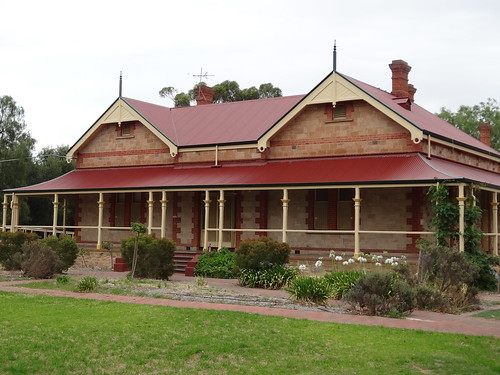
Image by denisbin Paralowie House overlooks the Little Para River and the owner in 1894 had a fine stone Gate House and stone pillar gates built right on the edge of the river on Waterloo Corner Road.
Oranges along the Para. The orange tree is botanically known as citrus sinensis which comes from China but is grown in tropical and subtropical areas of the world. The fruit of this tree gave us the name for one of our primary colours. This colour was first recoded in the English language in 1512. Orange is a Sanskrit Indian word. In Europe oranges have been grown in Italy and Spain since they were brought there by the Crusaders in 1100s from the Middle East. The first mention of commercial orange growing along the Para was in 1870 when Mr Urlwin exhibited Salisbury oranges at the Adelaide Royal Show. Then Mr F Fendon was described in newspapers in 1876 as a pioneer of commercial orange growing at Salisbury as he had been experimenting with orange trees since 1850. He hoped his display at the Salisbury Show of 1876 would encourage others to turn to orange growing. He had 20 varieties growing along Para when he exhibited them at the Salisbury Annual Show in 1876. More oranges were grown in the 1880s and by the 1890s hundreds of cases a year were being exported by P & O steamers to London. Thus the big expansion of commercial orange growing was in the 1880s. The oranges grown were Navel, Valencias, Washingtons and Lisbons( lemon) and these were the four” houses” in the Salisbury Primary School in the 1950s. Other earlier varieties grown included Sabina (a sour Italian orange), Rio (a red grapefruit), Seville oranges etc. Navel orange is a variety that was developed in Brazil in the 1820s, Washingtons were also from Brazil but Navels were developed for commercial orchards in California. Mr Russsell of Paralowie House is a good example of what Salisbury farmers did. He converted from growing oats and wheat to oranges in 1890. He planted 82 acres of his 122 acres in citrus trees 21 feet apart giving him over 1,000 trees. The annual floods of the Little Para were the secret of providing the rich alluvial soils in the Para valley. Other early citrus growers in Salisbury were the Kuhlmann, Moss, Tate, Jenkins, Harvey, Ponton and Sayer families. In the 1970s as the citrus industry died the flood plains of the Little Para were converted to parklands if they flooded or to housing if they were not flood prone. But once the Little Para Reservoir was completed the annual floods stopped anyway. Oranges were also extensively grown at Golden Grove. During the dry of summer water was taken from the Little Para to irrigate the oranges and one old stone waterwheel used for this purpose has been restored in Salisbury. That waterwheel was built for orange grower Frederick Kuhlmann of the Old Spot Hotel in 1899 and used until the 1940s.
Salisbury. Sir Montague( or Montagu) Chapman, Third Baronet of Westmeath near Dublin Ireland, used a loop hole in the Special Survey regulations of 1839 and selected his 4,000 acres for £4,000 in different areas. He took 800 acres at Koonunga near Kapunda; 500 acres at Kapunda (a friend of his Bagot also got land there); 500 acres near Waterloo and Marrabel; and later in 1842 he selected a further 2,200 acres between the Little Para River and Dry Creek at what is now Mawson Lakes, Salisbury and Cross Keys. At Killua Castle in Ireland he had 9,000 acres and hundreds of tenant farmers. He wanted to do the same in SA. In 1840 he sent out Captain Charles Bagot from Ireland with 224 Irish immigrants to settle his, and Bagot’s lands, at Kapunda with Irish labourers and tenants. Then in 1842 he sailed out to SA himself with 120 Irish tenant farmers whom he installed on his lands at Cross Keys. Sir Montague Chapman returned to Ireland the next year. Then in 1847 he sent out a further 214 Irish immigrants to be tenant farmers on his Cross Key to Salisbury lands. They came out on the ships named Trafalgar and Aboukir. Sir Montague Chapman lived in Ireland not SA but returned to his SA estates in 1852 and drowned at sea in 1853 off Portland when returning to SA from Melbourne. His brother inherited the SA lands and estates. The lasting effect of Sir Montague Chapmans tenant farming ideas was a large number of Irish Catholics around the Salisbury and Kapunda districts. Many of these immigrants soon became independent landowners themselves rather than Montague’s tenants.
Daniel Brady, another Irishman was a self-made Irish immigrant to the area. He purchased 100 acres, now the Parafield Airport in 1845. He then got the license to the Cross Keys hotel. Much later Brady laid out the town of Virginia in 1858.But there were other Catholic influences in Salisbury too. William Leigh of Staffordshire (and of Leigh Street Adelaide) was a great land investor and speculator in SA and donated lands early to the Anglican Church ( in Leigh St.) then he converted to Catholicism and donated lands to the SA Catholic Church for the first church and bishop’s palace on West Terrace etc. At Salisbury he donated 500 acres to the local Catholic Church along the Little Para where the reservoir is now situated. The local church rented that farm out as income until it was sold in 1896. Thus because of two major Catholic British aristocrats Salisbury thrived as a centre of Catholicism and had one of the largest Catholic Churches in SA in the mid-19th century. The church itself was set up when the state Government was offering glebe lands for churches to get established. The Catholics of Salisbury received 20 acres of land under this system through Bishop Murphy in 1850. The foundations of St Augustine’s Church were laid in 1851 with the church being used before its final official opening in 1857. This grand stone church replaced an earlier pug and pine church which had opened in 1847 on the site. The tower was added in 1926.
But the main story of Salisbury is centred on Scottish born John Harvey of Wick. But who was John Harvey? Is his main claim to fame that he brought out from South Africa soursob bulbs? He was a man of ideas wanting to make money. He came out to SA alone when he was 16 years old arriving in 1839 on the ship named Superb. By 1843 Harvey had moved to Gawler where he drove mails between Adelaide and Gawler. This gave him the idea of grazing cattle on the unoccupied plains between the two settlements. He started squatting. He let overlanders from NSW depasture their flocks on these lands, for a fee, although he had no legal right to do so. He accepted cattle for fees and soon had stock of his own. To this he added some horses which he bred for sale (or export to India) and once he had fattened the cattle he sold them for meat for the Adelaide market or through his butcher shop in growing Gawler. He became a major meat supplier for Adelaide and Gawler. He also experimented with cereal growing on the Salisbury plains and claims to be have been the first to do so. Within a few years he had amassed a sizeable amount of money from almost nothing and he purchased his first land at Gawler, where he built his first stone house, and at Salisbury when the Hundred of Yatala was declared in 1846. He was temporarily forced off the land he was squatting upon until he purchased 147 acres in 1847. He subdivided a small part of it to create the town of Salisbury with the main street named after himself and the street parallel to it named Wiltshire where his wife Ann Pitman (cousin of Sir Isaac Pitman of shorthand fame) was born. His town plans were submitted in 1848 as he hoped to make money from this action. Harvey continued living in Salisbury and went into building houses for people, breeding race horses and encouraging agriculture. He was elected to parliament in 1857 for one term and served on the Yatala District Council. His land deals included selling the area of Gawler that became Bassett Town by the old Gawler railway station. He was a mainstay of the Royal Horticultural Society and the Adelaide Racing Club. He was a local Justice of the Peace. John Harvey died in Salisbury in 1899, aged 78 years but his descendants stayed on in the town to be orange growers. John and his wife Ann are buried in St John’s Anglican cemetery. He left three sons and daughter.
By 1854 there were churches being erected in Salisbury; a flour mill; a hotel; and many houses for residents. The earliest SA settlers has eschewed the Adelaide Plains as they were hot and dry and they preferred the wetter, cooler Adelaide Hills. By 1845 less hills land was available and some saw the potential of this fertile little river valley close to the Adelaide and on the main copper mine routes from Adelaide to Kapunda and Burra. Apart from the Catholics the town attracted Anglicans, who were to construct their first church in 1849 or 1850 although the date on the building says 1846 which was before the land was even surveyed. John Harvey is known to have sold two lots to the Anglican Bishop Short for a nominal amount for an Anglican Church in 1850. It is therefore unlikely that the Anglicans built anything before 1850 but John Harvey might have allowed a building on his land before it was officially handed over to Bishop Short. A number of Primitive Methodists were also drawn to Salisbury and they who formed their congregation in 1849 with services on the banks of the Little Para. In 1851 they opened their Primitive Methodist Church called Hephzibah which was replaced with a second solid stone church in 1858. The Primitive Methodists purchased their land from John Harvey. They then established satellite Primitive Methodist churches at Burton, Sturton, Greenwith and other further out districts like Carclew, Two Wells etc. The Wesleyan Methodists had a church at the Old Spot (1857) but they too constructed a Wesleyan church in Salisbury West in 1858 after the arrival of the railway to the town. It has been a residence since 1904 but is defaced with ugly 1950s additions.
Salisbury grew quite quickly because it was only a few years before the town was connected with Adelaide by the Gawler train line. North of the Para River John Porter purchased land at the same time as John Harvey in 1847 and he too create a small private town with Porter, Gawler and Commercial streets etc. His town merged with Harvey’s as did the later 1856 subdivision of Salisbury West by William Trevaskis. No cathedral emerged but the town had its churches, hotels, a flour mill and industry. It soon had a private school too. Charles James Blatche Taplin, my great great grandfather had a licensed school in Salisbury from 1855 until his death in 1867. His wife Eliza Taplin had a separate school for girls which she continued after his death. After the Education Act of 1875 the government built the old Salisbury School in 1876. Charles Taplin was also the treasurer of the St Johns Anglican Church for many years and was present at the laying of its foundation stone with architect Daniel Garlick in 1858. The town remained a local service centre until World War Two when the government purchased land at Edinburgh for an ammunitions works and secure storage area and a further 58 acres of land, mainly from descendants of John Harvey, along Park Terrace in Salisbury for emergency war housing. It was required to house all the workers required for the war time industry at Penfield. Some 284 fibro “cabin homes” were erected in Salisbury on vacant land and the population grew rapidly. After the war the town grew further with the establishment of Salisbury North in 1949 as a Housing Trust suburb with over 500 new homes. Shortly after this in 1954 the new satellite city of Elizabeth and its associated industries was created in the Salisbury Council area abutting on to the Para River. In the 1950s most of the pioneering families from the late 1840s were still living in Salisbury as it was just a small rural town with a water trough for horses in the main street and a hitching post! By the 1970s the town had become a city and changed dramatically for ever.
Some Historic Salisbury Properties. •Anglian Church and cemetery. See details above. Early building 1849 or 1846? The Garlick designed church opened 1865 but the foundation stone was laid in 1858. In 1989 a fire destroyed the interior and the roof of the church was rebuilt. •Former Primitive Methodist Hephzibah Church and cemetery. After open air services the first Primitive Methodist church was built on this site in 1851. In 1858 a new grand church called Hephzibah was erected here to replace it. The land for the church was purchased from John Harvey for £10. The church name means “in her delight”. The church was restored in 1904 and then became the only Methodist church in Salisbury. In 1960 the church was sold to Coles who replaced it with a supermarket and a new Methodist Church was built on Park Terrace. That new church is now the Uniting Church. •Salisbury Institute. This important building for social events also providing the original reading room and library which opened in 1884.The land was donated by William Kelly of One Tree Hill and the architect was Frederick Dancker originally from Macclesfield where he designed their institute too. Like many institutes it became a community hall run by the Council in 1939 who started showing movies in it. •Salisbury Schools. The northern wing of Salisbury School was built in 1876 with pointed gothic windows in the west gable. The southern wing was added in 1879. Notice the slightly different windows etc. The first school operated in the 1846/49 Anglican Church for many years. A High School opened in Salisbury in 1959. •Salisbury Police Station and Courthouse now the town museum. This police station with cells and outbuildings and Courthouse was opened in 1859 after a request by MP John Harvey to the Commissioner of Public Works. E.A Hamilton was the architect for the government. The station cost £730. It is now a museum.
Salisbury West, the Gawler railway and Shirley Hall. The first major railway line in South Australia was from Adelaide to Gawler and it reached Salisbury in 1857. A local land owner then subdivided some of his land to create Salisbury West which was west of the new railway line. William Trevaskis did this in 1856 before the railway came when he divided off a few acres from his original 1846 freehold estate of 82 acres (one section). As a land speculator he created 61 town blocks which he advertised as “adjoining Salisbury Station of the Adelaide Gawler Town Railway.” This worked well. This area just west of the railway station soon had residences, a hotel, and a Wesleyan Church. When Trevaskis subdivided this estate he named one street East Terrace facing the railway line. This is where Edmund Paternoster later established his windmill, pumps and engineering works in 1878. His Little Gem windmills were sold in all colonies. East Tce was later changed to Paternoster Street to commemorate this important local industrialist of the 19th century. The Assistant Engineer for the construction of the railway Adelaide-Gawler railway, W Coulls purchased three blocks and built the Australian Heritage Listed Shirley Hall is on one of them with outbuildings, coach house and stables on the others. Shirley Hall was built just behind the old Wesleyan Church of 1858 with cellars and 7 main rooms and a separate kitchen in the outbuildings. The original brick and cast iron fence (made at James Martin foundry Gawler) still survives as does the original slate tiles. Coulls died in 1861 and the house had several owners before it was purchased by James Thompson in 1898. He renamed it Chelsea. Sir Jenkin Coles, Speaker of the South Australian parliament for the lower Mid North was a friend of James Thompson and often held political meetings at Chelsea House. The house was only sold out of the Thompson family in 1975. The nearby Wesleyan Methodist Church was built in Romanesque style in 1858. With the three Methodist churches union in 1900 all services were conducted in the former Wesleyan Church between 1900 and 1904 when repairs to Hephzibah were completed and Hebzibah then became the one and only Methodist church in Salisbury. Not long after 1904 this Wesleyan church was sold as a residence.
Paralowie. Paralowie House overlooks the Little Para River and the owner in 1894 had a fine stone Gate House and stone pillar gates built right on the edge of the river on Waterloo Corner Road. Paralowie House and this gate house was built in 1894 for Frank Russell an investor and farmer. His story is related above how he changed from dairying and cereal growing to orange and lemon orchards in 1890. The land on which Paralowie now stands was earlier owned by the Bagster family who sold it on in 1883. The Russells liked to host functions at their residence and it was reported in the press that the whole town attended celebrations here when Mafeking was successfully relived by the British forces in 1900 during the Boer War. Russells sold their Paralowie estate in 1917. A later resident of Paralowie House for many years was the state Coroner lawyer T.E.Cleland. Cleland lived at Salisbury and travelled to the Coroner’s Court by train daily rom Salisbury. Cleland served as Coroner from 1947 into the 1960s. Cleland was a pig breeder.
0 notes
Text
Welp, Citizens and Neighbors, take a wild guess who is sick right now! Yeah, that’s me. With a fever.
But anyway, the show must go on so both of my reviews are coming tomorrow or on Wednesday. Stay tuned!
#malmaison media salon#jacobin fiction convention#review update#clisson et eugenie#at aboukir and acre#napoleonic media#frev media
13 notes
·
View notes
Text
Guys, I’m still sick so it’s probably best for me to post reviews during the following week.
Either way, stay tuned!
#jacobin fiction convention#malmaison media salon#clisson et eugenie#at aboukir and acre#review update
8 notes
·
View notes
Text
Hey, everyone!
I’m healthy and finally completely back to normal. The reviews are coming on Monday.
Stay tuned!
Edit: The bitch I was sick with for the entirety of last week was apparently stomach flu. And it took me this week afterwards to recover from the aftermath. FUN TIMES! /sarcasm
#jacobin fiction convention#malmaison media salon#at aboukir and acre#clisson et eugenie#review update
9 notes
·
View notes
Text
Dear Neighbors, I’m feeling a bit tired so I’m actually going to post “At Aboukir and Acre” on Thursday. This week is going to get a bit hectic. Sorry about the delay but I needed to make the schedule change.
Stay tuned!
#malmaison media salon#at aboukir and acre#g a henty#napoleonic media#napoleonic literature#review update
6 notes
·
View notes
Text
I will be surprised if someone beside Napoleon and Nelson gets mentioned, considering Henty’s track record
Dear Neighbors, it’s time to dip our toes back into the adventure genre because the next review will be about a novel called “ At Aboukir and Acre: A Story of Napoleon’s Invasion of Egypt” by G. A. Henty, my old nemesis.
Why old nemesis? Well… Here’s one of my Frev reviews to explain why:
Anyway, stay tuned!
14 notes
·
View notes
Text
Dear Neighbors, it’s time to dip our toes back into the adventure genre because the next review will be about a novel called “ At Aboukir and Acre: A Story of Napoleon’s Invasion of Egypt” by G. A. Henty, my old nemesis.
Why old nemesis? Well… Here’s one of my Frev reviews to explain why:
Anyway, stay tuned!
14 notes
·
View notes